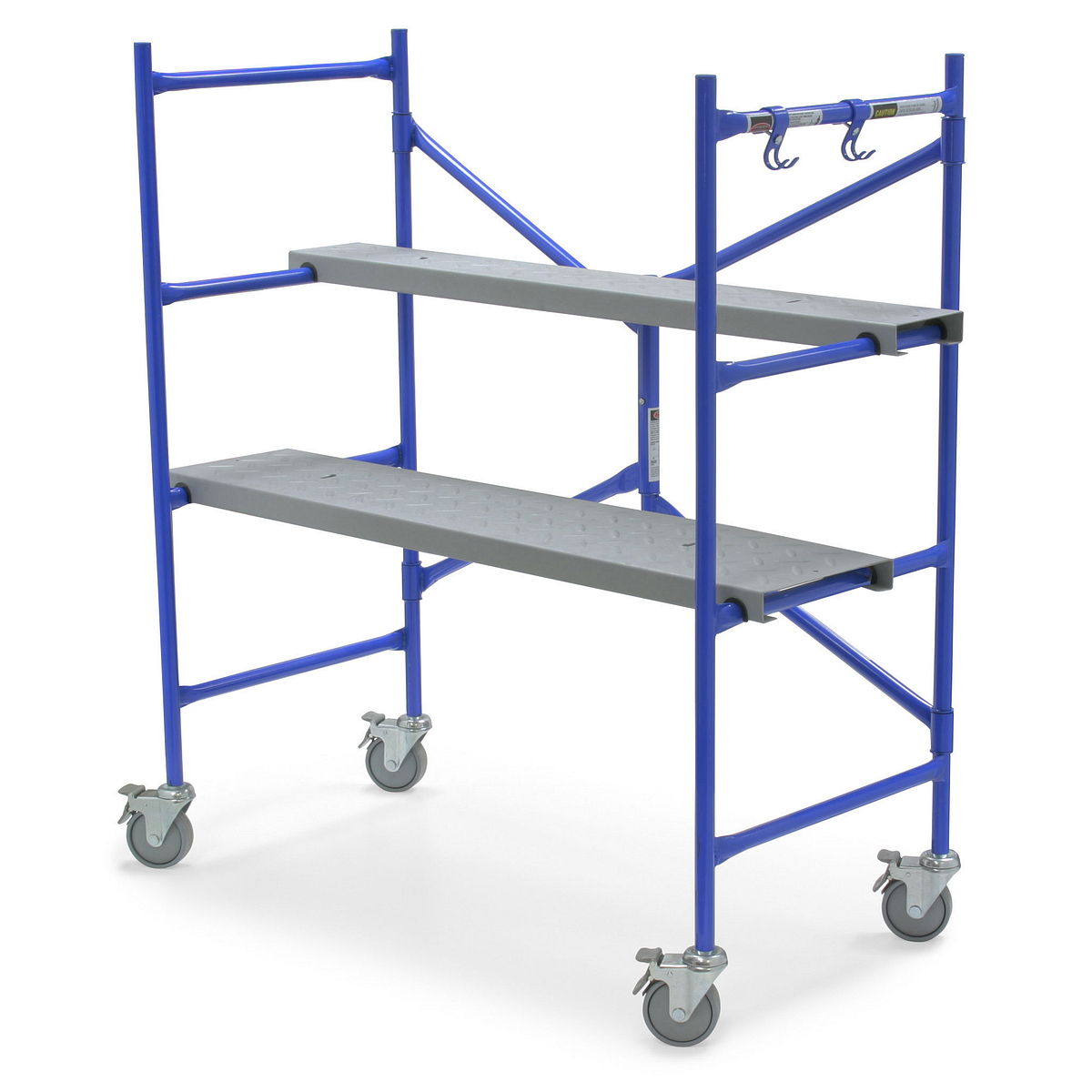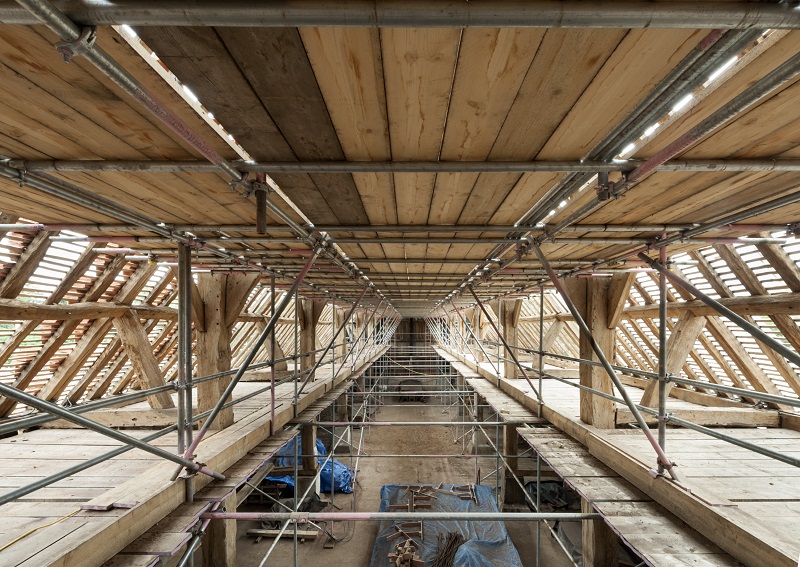Discover Leading Scaffolding Near Me for Your Home or Business Needs
Discover Leading Scaffolding Near Me for Your Home or Business Needs
Blog Article
Checking Out the Numerous Kinds Of Scaffolding Used in Building Projects
The construction sector counts heavily on different kinds of scaffolding to fulfill particular job needs, each offering unique benefits and applications. Traditional framework scaffolding supplies a tough foundation for general jobs, while suspended scaffolding is essential for job on skyscraper structures.

Standard Structure Scaffolding
Typical frame scaffolding is one of the most commonly made use of approaches in the building and construction market due to its robustness and versatility. This system includes vertical and horizontal frameworks that are put together to develop a stable platform for employees and materials. The primary components consist of vertical messages, horizontal ledgers, and angled braces, which with each other offer a strong structure that can sustain significant loads.
One of the essential advantages of conventional frame scaffolding is its adaptability to various building tasks, ranging from property buildings to large industrial structures. The modular style permits very easy setting up and disassembly, making it reliable for both long-lasting and short-term projects. Furthermore, the system can be tailored in height and size, suiting various structure layouts and website conditions.
Safety is vital in scaffolding applications, and typical framework systems are outfitted with guardrails and toe boards to stop drops and ensure employee security. Normal evaluations and adherence to security policies are important in keeping the stability of the scaffold (Scaffolding). Overall, typical structure scaffolding remains a fundamental selection in the building and construction sector, supplying a dependable system for labor and improving general project effectiveness

Suspended Scaffolding
Put on hold scaffolding offers a distinct service for construction tasks that call for access to raised surfaces, especially in scenarios where traditional frame scaffolding may be unwise. This kind of scaffolding is generally suspended from the roofing or upper degrees of a framework, utilizing a system of platforms, sheaves, and ropes to produce a functioning area that can be adapted to various elevations.
One of the key advantages of suspended scaffolding is its versatility. It can be conveniently rearranged or reduced to accommodate adjustments in building and construction demands, making it excellent for tasks such as window setup, façade job, and upkeep on skyscrapers. Additionally, the minimal footprint of suspended scaffolding enables far better use ground space in metropolitan environments, where room is often limited.
Safety is a crucial factor to consider in the usage of suspended scaffolding. Appropriate rigging and securing systems must be employed to ensure security and avoid accidents. Operators has to likewise be learnt the safe use of this devices. Overall, put on hold scaffolding provides a efficient and effective service for accessing hard-to-reach areas in various building circumstances, enhancing both efficiency and security on website.
System Scaffolding
System scaffolding, frequently considered as a modern-day solution in the scaffolding sector, includes pre-engineered components that can be quickly constructed and adapted for different building and construction tasks. Scaffolding. This sort of scaffolding is characterized by its modular design, which enables convenience and efficiency on job websites, suiting various heights and structural demands
Normally made from high-strength steel or aluminum, system scaffolding uses enhanced sturdiness and security. The components consist of vertical posts, horizontal ledgers, and angled dental braces, which adjoin firmly, making sure a robust framework. The design typically integrates standard installations, simplifying setting up and disassembly processes, therefore decreasing labor time and expenses.

Rolling Scaffolding
Moving scaffolding is a versatile alternative to traditional fixed scaffolding, designed for movement and simplicity of use on building sites. This type of scaffolding includes a platform sustained by structures with wheels, enabling employees to quickly move it as needed. The mobility function considerably enhances productivity, as it decreases downtime linked with constructing and dismantling taken care of scaffolding.
Commonly created from lightweight materials such as light weight aluminum or steel, rolling scaffolding offers a sturdy yet mobile option for jobs needing regular repositioning - Scaffolding. It is particularly useful in jobs such as painting, drywall installment, and electrical work, where accessibility to different elevations and locations is needed
Safety is extremely important in rolling scaffolding layout, with features such as securing wheels to avoid unplanned motion when in operation, and guardrails to protect employees from drops. In addition, numerous versions are adjustable in elevation, suiting various job needs.
Cantilever Scaffolding

The style of cantilever scaffolding normally includes utilizing arms or brackets anchored to a structure or structure, making it possible for the platform to prolong outward securely. Safety and security is critical; therefore, these scaffolds should be engineered to withstand environmental problems and different tons. Regular inspection and upkeep are necessary to guarantee structural honesty and employee safety.
Cantilever scaffolding is preferred for its adaptability and reliable use area, making it a prominent option in metropolitan environments where room constraints are common. Furthermore, it facilitates much easier access to high altitudes, eventually contributing to the general effectiveness of construction jobs. Similar to you can try here all scaffolding kinds, proper training and adherence to safety requirements are essential for workers utilizing cantilever scaffolding.
Final Thought
Typical structure scaffolding provides security, while put on hold scaffolding offers flexibility for elevated tasks. System scaffolding facilitates quick assembly, and rolling scaffolding enhances movement for differing work environments.
Traditional frame scaffolding provides a strong structure for basic jobs, while suspended scaffolding is necessary for work on high-rise structures.Moving scaffolding is a functional choice to conventional fixed scaffolding, developed for mobility and ease of usage on building and construction websites. As with all scaffolding kinds, appropriate training and adherence to safety criteria are important for workers utilizing cantilever scaffolding.
Traditional structure scaffolding gives security, while put on hold scaffolding provides adaptability for elevated tasks. System scaffolding assists in fast setting up, and rolling scaffolding improves movement for varying job settings.
Report this page